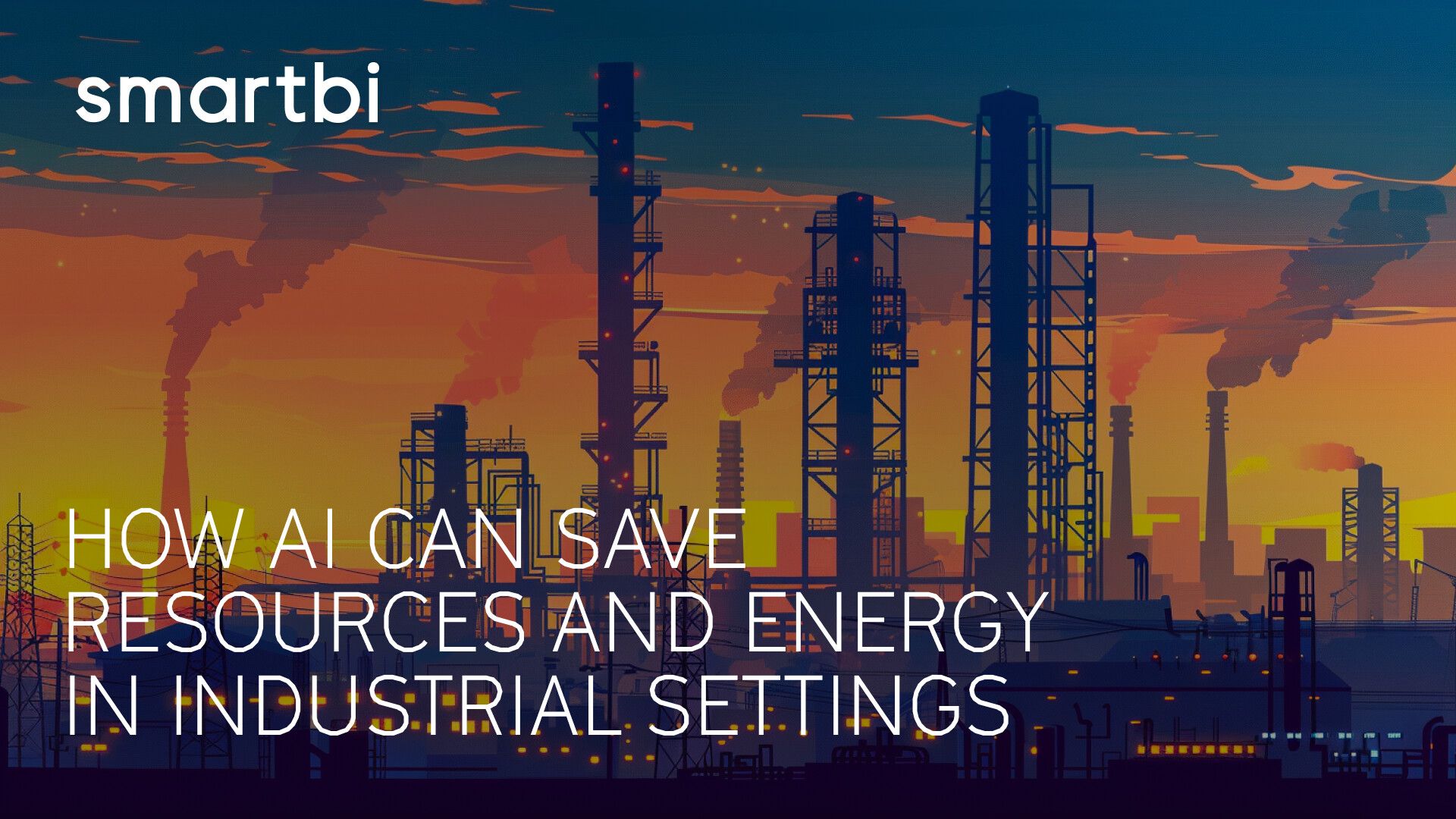
The industrial sector is a major economic activity and development driver, but its resource and energy intensity also significantly contribute to global emissions. For example, producing industrial materials like steel, cement, and chemicals requires large quantities of energy – around 2,300 Mtoe in 2019, roughly equivalent to the total primary energy demand of the United States.
Transitioning industries such as chemical manufacturing, energy production, and heavy machinery to more sustainable practices is critical to achieving climate goals such as those outlined in the Paris Agreement. AI strategies are not just a step toward greater efficiency and productivity but also a move toward a more sustainable industrial future.
Here are some practical ways we have witnessed leading industry experts save resources and energy in an industrial context. You can start small or go full-scale – either by adopting smart equipment or turning your facilities into smart buildings.
Make your equipment and machinery smart to reduce carbon footprint
The easiest way to upgrade your tools and machinery is to add a layer of "intelligence" on top of them. By doing this, a company can ensure that the tools and equipment can adapt to operational demands. Smart machinery adjusts its performance based on real-time data, ensuring optimal energy use.
A good (and widely used) example of such technology is AI-driven variable frequency drives (VFDs), employed in HVAC, pumping, and conveyor systems to adjust motor speeds to match load requirements, leading to significant energy savings. For instance, a water treatment plant can improve operational efficiency by installing AI-driven VFDs on its pumps. The VFDs dynamically adjust motor speeds based on real-time water demand. When the demand for water flow is low, the VFDs reduce the motor speed, decreasing energy consumption. Alternatively, during peak demand, the VFDs increase motor speed to meet the required water flow.
The installation of VFDs can lead to significant energy savings. Depending on the case, the reduction in energy consumption can be between 5% and 20%, resulting in substantial cost savings on electricity bills.
Predict energy waste and malfunctions – Invest in smart systems
One way to go deeper into optimization (and energy savings) is to invest in full-scale Energy Management Systems (EMS) paired with AI. These systems can help industrial companies monitor equipment performance and power usage and predict potential failures before they occur. This proactive approach allows companies to maintain and optimize equipment efficiently, preventing energy waste from malfunctioning assets.
For example, smart EMS can detect temperature anomalies that typically increase when equipment is about to fail. Operators can schedule the maintenance proactively in advance, and staff can be alerted, reducing unexpected downtime and preventing energy waste from malfunctioning machines.
By utilizing data analytics, predictive maintenance, and real-time monitoring, AI-powered EMS can also forecast energy demand based on factors like production schedules and weather conditions and automatically adjust equipment to optimize consumption. This capability enables companies to shift loads to off-peak times, taking advantage of lower utility rates and avoiding high demand charges.
Sustainable by Design: Smart buildings for greater energy efficiency
Modern industrial companies are investing in sustainability from the ground up by constructing smart buildings and factories. These so-called "green" buildings utilize AI to continuously run and optimize their systems, representing a significant investment while having the largest benefits.
According to a report by Transforma Insights, the digitalization of buildings could cut total energy use by as much as 10% between 2017 and 2040. It is estimated that AI-optimized HVAC systems can save 20-25% of electricity consumed and lighting control systems can save 35-40%. Considering that buildings are responsible for nearly one-third of global energy consumption and 37% of greenhouse gas emissions, investing in the latest technology is the smartest thing to do from a climate perspective.
AI can also improve building and equipment insulation by identifying areas of energy loss. AI systems can detect and seal leaks in compressed air systems. Additionally, AI can add to waste heat recovery systems by optimizing the capture and reuse of excess heat generated during industrial processes. After, AI predicts the best times to utilize recovered heat, improving overall energy efficiency and reducing the need for additional energy inputs.
AI-powered solutions enable industrial companies to reduce energy usage and carbon emissions. By implementing necessary adjustments and investing in the latest technologies, companies can simultaneously achieve their environmental goals and maintain (and even improve) stable operations.
Get in touchCould AI be applied to your business case?
Subscribe to the newsletter and learn how AI can solve business challenges.